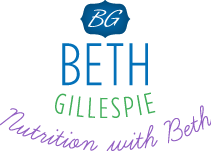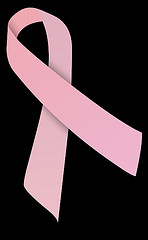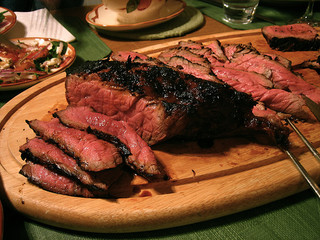September and October are popular months to participate in a detoxification program. Detoxification programs typically range anywhere from 10 to 28 days.
You may ask: “Is detoxification a trend? Is detox a buzz word?” Absolutely not!
We now know the science behind detoxification and why it works. We can now identify the critical co-factors (including specific vitamins, minerals, and amino acids) that support our detoxification enzymes. Detoxification can be used simply as a jump start to better health and more energy or it can be used as a healing therapy for chronic illness.
Why engage in a detoxification program? We used to think that toxicity only happened when a person was exposed to high amounts of a metal like lead or mercury or high amounts of a industrial chemical.
Now we know that even low levels of toxins such as BPA found in bottles, cans, and credit card receipts can have a dramatic effect on insulin production and our body’s ability to utilize glucose. Over time, low levels of toxins can poison our mitochondria, which affects our ability to make energy. In other words, low levels of toxins can disrupt our metabolism and yes, even make us gain weight! In fact, Dr. Jeffery Bland, often called the father of functional medicine, has connected molecular toxicology to obesity, diabetes, and oncogenic events.
There are numerous types of detoxification programs out there, and I am sure that you have been exposed to some of them! It is important to note that not all programs are safe for everyone.
I mentioned above that our detoxification enzymes are highly dependent on co-factors including specific vitamins, minerals, and amino acids to get the job done.
Water and juice fasts and/or detox programs that lack adequate protein do not provide all these critical co-factors to adequately support your detoxification pathways. And if you have a toxic load (which most of us do) and start to dump toxins without having enough support to get rid of the toxins, you will most likely end up feeling worse and not doing your body any good.
If you are interested in assessing your toxic load or testing to see how well you detoxify, please click here to set up a complementary strategy session with me.
I also offer a 21 day DIY Cleanse and Revive program, which is safe, effective, gentle, and backed by science!! Hundreds of women and men have completed this program with great results, including increased energy, better mental focus, and weight loss! Click here to learn more.

 Do you ever question why you take the time to eat healthy, work-out, and live a pretty healthy lifestyle? Every so often I question it all. I was reminded why I choose to live a healthy lifestyle (most of the time) while at Yosemite National Park over 4th of July weekend. There are hikes and activities for all levels of fitness; and you can’t do the most spectacular hikes with the awesome views if you are not fit (unless you are in your teens or 20’s when you can do anything!) As my boyfriend and I climbed to the top of Clouds Rest, I was so thankful for the good fuel that I put in my body and for my dedication to my exercise routine, including climbing lots of hills in SF! My legs and lungs felt so strong, even though we climbed 1,970 feet pretty quickly. We even passed up a group of 20 year olds…although they did pass us on the way down – no fear of falling! After we completed our 14.4 mile hike, I expected to be wiped out, especially the next day, but that didn’t happen. Well, I was a little tired that evening!
Do you ever question why you take the time to eat healthy, work-out, and live a pretty healthy lifestyle? Every so often I question it all. I was reminded why I choose to live a healthy lifestyle (most of the time) while at Yosemite National Park over 4th of July weekend. There are hikes and activities for all levels of fitness; and you can’t do the most spectacular hikes with the awesome views if you are not fit (unless you are in your teens or 20’s when you can do anything!) As my boyfriend and I climbed to the top of Clouds Rest, I was so thankful for the good fuel that I put in my body and for my dedication to my exercise routine, including climbing lots of hills in SF! My legs and lungs felt so strong, even though we climbed 1,970 feet pretty quickly. We even passed up a group of 20 year olds…although they did pass us on the way down – no fear of falling! After we completed our 14.4 mile hike, I expected to be wiped out, especially the next day, but that didn’t happen. Well, I was a little tired that evening!
 In my last newsletter I wrote about depression, anti-depressants, and how your gut health affects your brain and moods. Anti-depressants can be life saving and sometimes are necessary. However, as I mentioned in my last article, they do not address the root cause of depression and have a long list of side effects. A recent study found that paroxetine (the active ingredient in Paxil and Pexeva – widely prescribed SSRI antidepressants) may promote breast cancer. A large percentage of breast cancers are sensitive to estrogen, which means that estrogen contributes to their growth. According to this new research, Paroxetine has an estrogenic effect. “The paroxetine finding helps explain previous studies showing that it reduces tamoxifen therapy’s effectiveness,” explained Shiuan Chen, Ph.D., professor and chair of City of Hope’s Department of Cancer Biology and lead author of the study. “And it has implications for patients with estrogen-sensitive breast cancer who are on other medications.” 1.
In my last newsletter I wrote about depression, anti-depressants, and how your gut health affects your brain and moods. Anti-depressants can be life saving and sometimes are necessary. However, as I mentioned in my last article, they do not address the root cause of depression and have a long list of side effects. A recent study found that paroxetine (the active ingredient in Paxil and Pexeva – widely prescribed SSRI antidepressants) may promote breast cancer. A large percentage of breast cancers are sensitive to estrogen, which means that estrogen contributes to their growth. According to this new research, Paroxetine has an estrogenic effect. “The paroxetine finding helps explain previous studies showing that it reduces tamoxifen therapy’s effectiveness,” explained Shiuan Chen, Ph.D., professor and chair of City of Hope’s Department of Cancer Biology and lead author of the study. “And it has implications for patients with estrogen-sensitive breast cancer who are on other medications.” 1.
